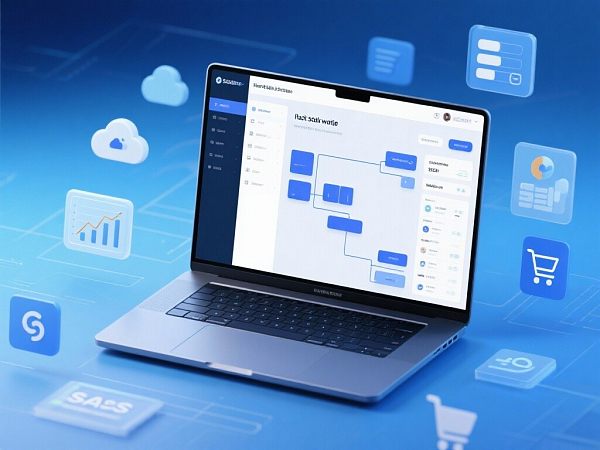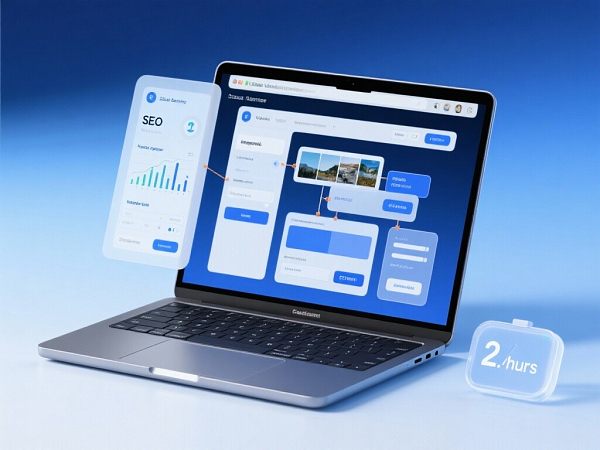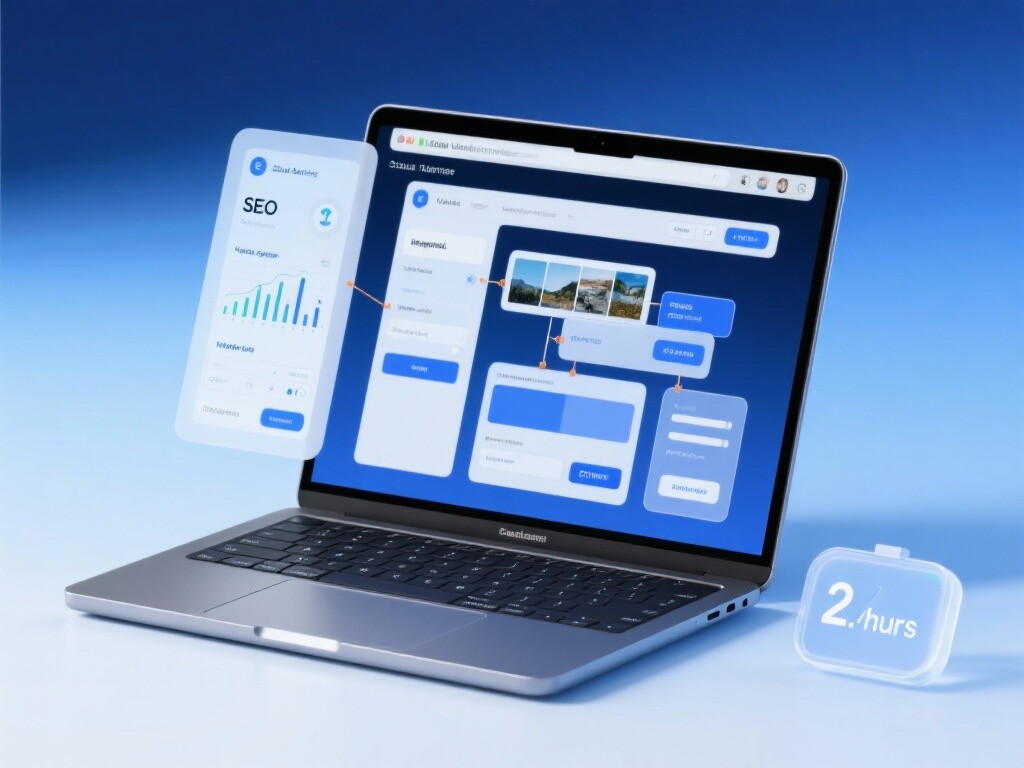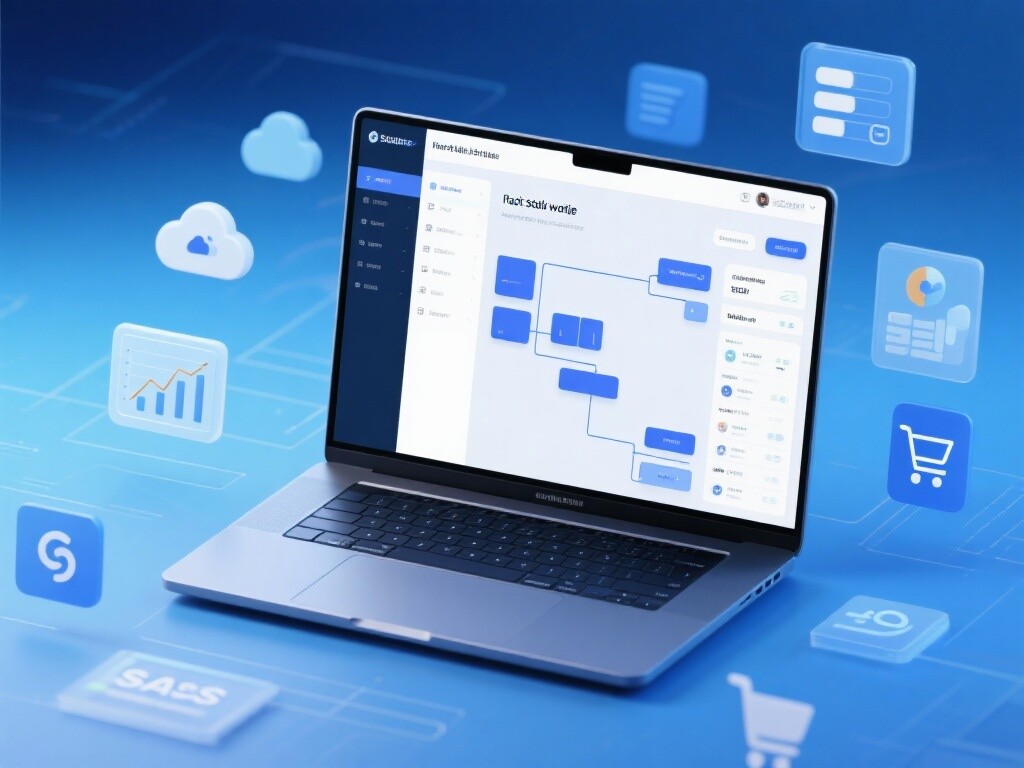Easy Camp Cloud Intelligent Website Construction and Marketing System Platform!
Definition of Quick Website Building: Visual, Low-Code or No-Code Website Solutions
Quick Website Building refers to the use of website construction platforms (Website Builders), visual content management systems (CMS), or drag-and-drop editors to complete a fully functional and professionally designed website in a matter of hours or days, at a speed far exceeding that of traditional custom development.

Core Features of Quick Website Building:
High Efficiency: Significantly reduces design and development time through pre-built modules, templates, and functional components.
Low Barrier: Utilizes **No-Code or Low-Code** visual operation interfaces.
Fully Managed: Most quick website building services adopt the **SaaS (Software as a Service)** model, integrating hosting, security maintenance, and system updates.
Differences Between Quick Website Building and Traditional Website Building:
History of Quick Website Building: Evolution from Code to Drag-and-Drop
The history of quick website building reflects the continuous "democratization" of internet tools, with its core being the transformation of complex coding tasks into simple user interface operations.
1. Early Stage: Templates and Simple HTML Editors (1990s-2005)
Technical Features: Relied on simple HTML editors (e.g., Dreamweaver) or early free hosting platforms (e.g., Geocities).
Limitations: Basic interfaces, single functionalities, and still required users to have foundational coding knowledge for customization.
2. Popularization and Theming of CMS (2003-2012):
Milestones: The maturation of content management systems (CMS) like WordPress and Joomla.
Impact: The emergence of large numbers of Themes and Plugins allowed for rapid expansion of website functionalities. However, installation, configuration, and maintenance still required certain technical skills.
3. SaaS Website Building and the Visualization Revolution (2012-Present):
Core Technology: The explosion of SaaS platforms (e.g., Wix, Shopify, Squarespace), which bundled hosting, software, and editing tools together.
User Experience: Introduced **"Drag-and-Drop" visual editing**, enabling WYSIWYG (What You See Is What You Get) and eliminating coding barriers.
Intelligence: The advent of **AI Website Building (ADI)**, where users only need to input business information, and AI automatically generates the initial website draft.
4. High Performance and SEO Integration (Present):
Trend: Platforms began embedding performance optimization (e.g., CDN, Core Web Vitals optimization) and advanced SEO configurations.
Goal: Quickly built websites must not only be fast but also professional, efficient, and SEO-friendly.
Technical Principles of Quick Website Building: SaaS Architecture and Visual Encapsulation
The efficiency and low barrier of quick website building platforms lie in their cloud-based and centralized management architecture.
1. SaaS Cloud Hosting and Resource Sharing
Principle: User website files and databases are stored on the platform's high-performance cloud server clusters.
Advantages: Extremely low operational costs, with security updates and system maintenance handled uniformly by the platform. The platform can easily integrate CDN (Content Delivery Network) and security protections (e.g., DDoS) for all users.
2. Modular and Component-Based Design
Principle: Each element of the website (e.g., navigation bars, image galleries, text boxes, shopping carts) is abstracted into reusable modules or components.
Efficiency Boost: Users can construct complex layouts by dragging these modules, eliminating the need to write code from scratch. This ensures highly standardized and easily maintainable website structures.
3. No-Code Frontend Rendering (Visualization Rendering)
Principle: The visual editor compiles and renders the user's drag-and-drop operations and configuration information in real-time into clean and standard HTML, CSS, and JavaScript code.
SEO Optimization: Modern quick website building platforms ensure the exported code is concise and well-structured, with good **crawlability and indexability** to meet SEO requirements.
4. Pre-Built SEO Optimization and Performance Acceleration
Principle: Platforms embed performance optimization mechanisms in their underlying architecture: automatic image compression, browser caching settings, and prioritized loading of critical CSS paths.
Value: Ensures websites meet Google's **loading speed (Core Web Vitals)** requirements from the outset, laying the foundation for future SEO rankings.
Technical Features and Core Advantages of Quick Website Building
The advantage of quick website building lies in transforming complex technical tasks into simple business configurations.

1. Built-In SEO-Friendly Architecture
Feature: Many professional platforms (e.g., SaaS partners of EasyStore) have integrated SEO best practices into their systems: automatic Sitemap generation, URL standardization, and title/description tag optimization.
Advantage: Avoids common technical SEO errors in traditional self-built websites, saving significant debugging time.
2. Powerful Design Flexibility and Professional Templates
Feature: Provides a vast library of **responsive** design templates, ensuring perfect display on all devices.
Advantage: Even without a design background, users can quickly obtain a visually professional, modern, and aesthetically pleasing brand website.
3. Business-Focused Functional Modules
Feature: Offers pre-built functionalities for specific business scenarios: e-commerce (shopping carts, payments), blogs, reservation systems, membership systems, multilingual support.
Advantage: No need to write code or search for complex plugins, key business functionalities can be activated with one click, accelerating business launch.
4. High Security and Stability
Feature: The platform uniformly provides SSL certificates, regular security scans, data backups, and server monitoring.
Advantage: Users need not worry about hacker attacks, system crashes, or data loss, ensuring continuous and stable website operation.
5. Rapid Iteration and A/B Testing Support
Feature: Visual operations make page modifications and adjustments extremely fast.
Advantage: Marketing teams can quickly test different creatives, copy, and layouts, conducting **conversion rate optimization (CRO)** to enhance website performance based on data.
Deep Applications and Business Value of Quick Website Building
The quick website building model has become the preferred choice for modern enterprises to achieve agile development and rapid iteration.
1. MVP (Minimum Viable Product) Testing
Application: Quickly build a website with core functionalities and value propositions for market validation, user feedback collection, and early-stage fundraising demonstrations.
Value: Validates business ideas at minimal cost and time, avoiding significant development resources on unproven projects.
2. Rapid Marketing Campaigns
Application: During urgent timeframes like holiday promotions, new product launches, or offline events, quickly launch high-conversion dedicated landing pages (Landing Pages).
Value: Swiftly captures short-term traffic and conversion opportunities, avoiding missed golden marketing periods due to development delays.
3. Independent Stores and Cross-Border E-Commerce Launch
Application: Use professional quick website building platforms like Shopify or EasyStore to rapidly set up cross-border e-commerce independent stores with multi-currency, international payment, and logistics integration.
Value: Quickly enters global markets, leveraging built-in SEO and marketing features to start selling immediately.
4. SME Brand Digitalization
Application: Establish professional brand websites, product showcase pages, online customer service systems.
Value: With minimal initial investment, achieves digital brand representation and online service capabilities, enhancing customer trust.
EasyStore: Your Quick Website Building and SEO Growth Strategy Partner
EasyStore deeply understands the value of speed in digital marketing. Our services go beyond recommending platforms; we ensure your quickly built website has long-term SEO growth potential.

Platform Selection and Matching: Based on your business type, budget, and functional requirements, recommend the most suitable quick website building platform (e.g., Wix for design, Shopify for e-commerce, WordPress visual plugins for content).
SEO Architecture Audit and Optimization: Ensure the chosen platform and template fully comply with Core Web Vitals and Google SEO best practices at the code level.
High-Conversion Template Customization: Assist in selecting and optimizing template layouts, ensuring the website has clear calls-to-action (CTA) and user conversion paths (CRO) while being launched quickly.
Full-Funnel Marketing Integration: Help seamlessly integrate all marketing and data tracking tools like Google Analytics and Meta Pixel into your quickly built website.
Post-Launch Growth Planning: Develop content marketing and link-building strategies post-launch, ensuring your quickly acquired website continues to rank high in search results.
Choose EasyStore to turn your quick website building project into a high-efficiency, professional, and sustainable source of traffic and conversions.
FAQ
1. Will a quickly built website perform worse in SEO compared to a custom-developed one?
Not necessarily. Modern rapid website-building platforms often have inherent advantages in foundational SEO.
Advantages of rapid website building: They uniformly integrate key SEO optimizations (such as speed optimization and responsive design) at the system level, avoiding common technical vulnerabilities in custom development.
Risks of custom development: The effectiveness of traditional custom development entirely depends on the development team's SEO expertise. If the technical foundation is weak, it can lead to significant SEO pitfalls. Conclusion: When basic functionalities are met, choosing a professional rapid website-building platform with robust built-in SEO features can deliver more stable and efficient SEO performance.
2. Can rapid website building meet my e-commerce needs?
Absolutely. Many top-tier global e-commerce platforms operate on the SaaS rapid website-building model.
Examples: Shopify and Shopline are rapid website-building platforms designed specifically for e-commerce. They provide complete shopping cart, payment integration, logistics management, and inventory systems, allowing users to quickly launch e-commerce operations with just a subscription.
Advantages: They typically come with multi-currency, multi-language, and international payment functionalities, making them particularly suitable for cross-border e-commerce.
3. How can rapid website-building platforms handle traffic spikes?
Most professional rapid website-building platforms are SaaS-based with cloud architecture, offering exceptional scalability.
Principle: These platforms use high-performance cloud services at the backend, enabling elastic resource scaling based on traffic demands.
Advantages: Even during high-traffic promotional events like Black Friday or Singles' Day, websites can maintain high speed and stability, which is hard to achieve with self-managed small servers.
4. Should I choose a SaaS rapid website-building platform or WordPress + visual plugins?
This depends on your needs for control and convenience:
SaaS rapid website-building (e.g., Wix/Shopify): Highest efficiency, lowest maintenance. Ideal for those prioritizing speed and simplicity and who don’t want to deal with code or server issues.
WordPress + visual plugins (e.g., Elementor/Divi): Greater control, requires self-maintenance. Suitable for those seeking custom functionality and code control and who have basic technical knowledge.

Customer Reviews
Mr. Huang, CEO of a tech startup
"We just secured a round of funding and needed to launch a professional brand website and product demo pages within two weeks. EasyStore recommended a SaaS rapid website-building solution with powerful built-in SEO features and helped us quickly configure and optimize the content on the platform. Not only did we complete the launch in just 10 days, but the website also achieved **perfect Core Web Vitals scores (loading speed)**. This allowed us to focus entirely on product iteration, and the website started ranking for core keywords within the first week."
Ms. Huo, a cross-border e-commerce entrepreneur
"I run a cross-border D2C brand solo and don’t have extra bandwidth to manage servers or code. The e-commerce rapid website-building platform recommended by EasyStore was a lifesaver. It enabled me to build an e-commerce standalone site quickly with zero coding, and its built-in remarketing, multi-language, and payment features are incredibly polished. With EasyStore’s CRO optimization suggestions, my website conversion rate is 20% higher than the industry average. The rapid website-building model allows my solo team to compete efficiently in global markets."




